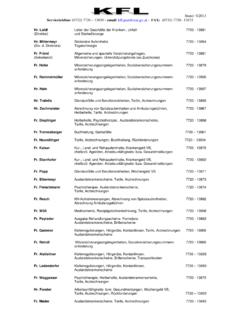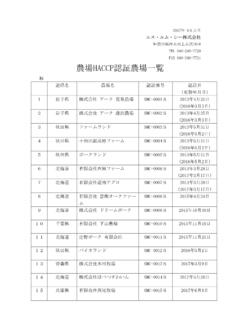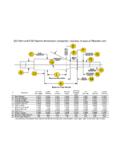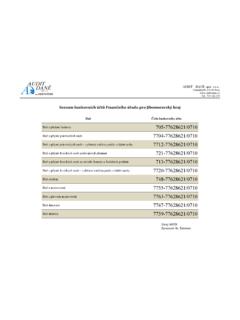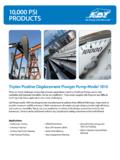Transcription of Suggested Format for a Written Hazard Communication …
1 MIOSHA/CET-5530 (02/17) 1 Authority: 154 of 1974 Michigan Department of Licensing and Regulatory Affairs Michigan Occupational Safety and Health Administration Consultation Education and Training Division Suggested Format for a Written Hazard Communication Program General The following Hazard Communication program has been established for (company name) . This program will be available for review by all employees. Hazard Classification Chemical manufacturers or importers shall evaluate chemicals they produced or import to classify the chemicals in accordance with the revised Hazard Communication Standard.
2 Effective June 1, 2015 - For each chemical, the chemical manufacturer or importer shall determine the Hazard classes, and where appropriate, the category of each class that apply to the chemical being classified. This information will be placed in the Safety Data Sheet (SDS) and on the product label. (company name) will rely on SDSs obtained from product suppliers to determine which chemicals are classified as hazardous for employees. Labeling A. (name or job title) will be responsible for seeing that all containers entering the workplace from a manufacturer, importer or distributer are properly labeled.
3 B. All labels shall be checked for: 1. Product identifier; 2. Signal word; 3. Hazard statement(s); 4. Pictogram(s); 5. Precautionary statement(s); and, 6. Name, address, and telephone number of the chemical manufacturer, importer, or other responsible party. C. Each (employee or supervisor) shall be responsible for ensuring that all secondary workplace containers used in their work area are labeled with the appropriate product identifier and provide employees with information regarding the physical and health hazards of the hazardous chemical.
4 Note: Workplace labeling. The employer shall ensure that each container of hazardous chemicals in the workplace is labeled, tagged or marked with either: The information specified for labels on shipped containers; OR, product identifier and words, pictures, symbols, or combination thereof, which provide at least general information regarding the hazards of the chemicals, and which, in conjunction with the other information immediately available to employees under the Hazard Communication program, will provide employees with the specific information regarding the physical and health hazards of the hazardous chemical.
5 2 Safety Data Sheets Change from MSDS to SDS Format effective June 1, 2015 - Chemical manufacturers or importers shall ensure that SDSs for their products includes the following Sections in order: Section 1, Identification; Section 2, Hazard (s) identification; Section 3, Composition/information on ingredients; Section 4, First-aid measures; Section 5, Fire-fighting measures; Section 6, Accidental release measures; Section 7, Handling and storage; Section 8, Exposure controls/personal protection; Section 9, Physical and chemical properties; Section 10, Stability and reactivity; Section 11, Toxicological information.
6 Section 12, Ecological information; Section 13, Disposal considerations; Section 14, Transport information; Section 15, Regulatory information; and Section 16, Other information, including date of preparation or last revision. A. (name or job title) will be responsible for compiling and maintaining the master SDS file. The file will be kept in/at (location) . B. Additional copies of SDSs for employee use are located in/at (location).
7 C. SDSs will be available for review to all employees during each work shift. Copies will be available upon request to (name or job title) . D. Posters identifying the person responsible for maintaining SDSs and where the SDSs are located are posted at (location) . Posters notifying employees when new or revised SDSs are received will be located in the same location(s). E. If a required SDS is not received, (name or job title) shall contact the supplier, in writing, to request the SDS.
8 If an SDS is not received after two such requests, (name or job title) shall contact the MIOSHA's Construction Safety and Health Division at (517) 284-7680 or General Industry Safety and Health Division (GISHD) at (517) 284-7750, for assistance in obtaining the SDS. The MIOSHA program does not maintain a library of SDSs. However, either of the above divisions will assist an employee in obtaining a copy of a SDS by contacting the employer or supplier. 3 Employee Information and Training A. (name or job title) shall coordinate and maintain records of employee Hazard Communication training, including attendance rosters.
9 B. Before their initial work assignment, each new employee will receive Hazard Communication training. This will include the following information and training: Information: The requirements of the MIOSHA Hazard Communication Standard All operations in their work area where hazardous chemicals are present Location and availability of the Written Hazard Communication program, the list of hazardous chemicals, and the SDS Training: Methods and observations that can be used to detect the presence or release of hazardous chemicals in the work area.
10 The physical, health, simple asphyxiation, combustible dust and pyrophoric gas hazards, as well as hazards not otherwise classified, of the chemicals in the work area; Measures the employees should take to protect themselves from these hazards; Details of the Hazard Communication program-- including an explanation of the new label elements [product identifier; signal word; Hazard statement(s); pictogram(s); and, precautionary statement(s)] on shipped containers and the workplace labeling system used by their employer; the new SDS Format /sections; and, How employees can obtain and use Hazard information C.










